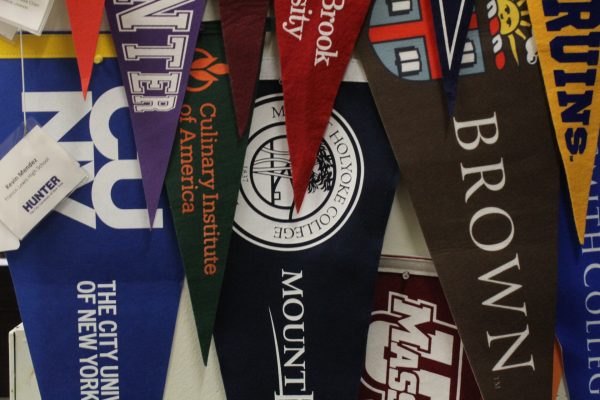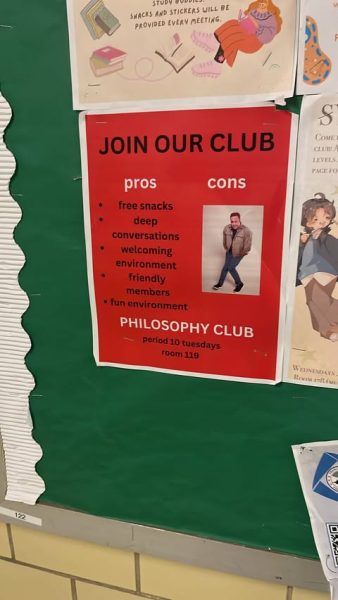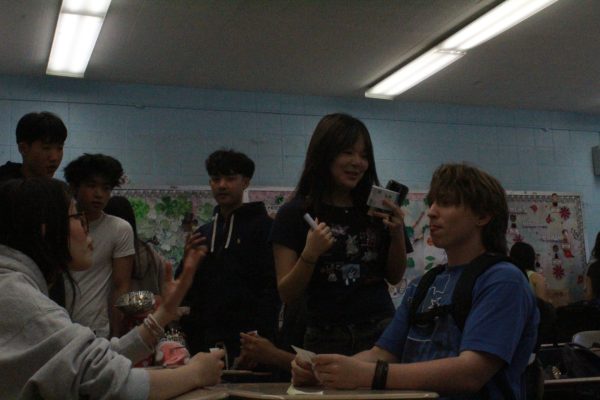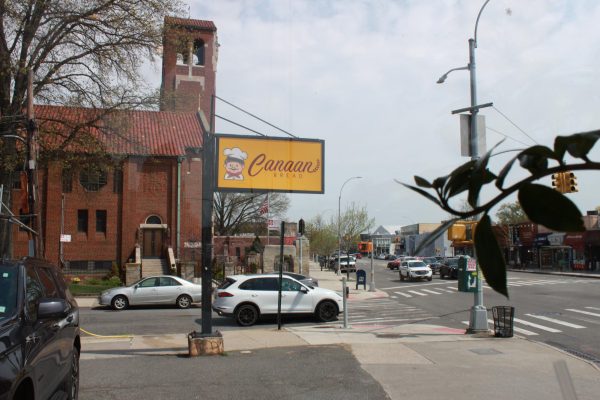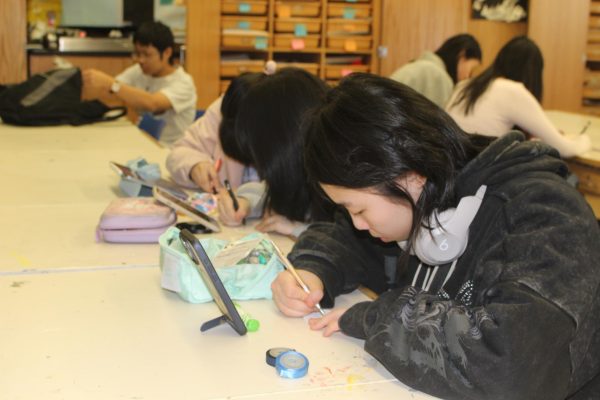Students and Teachers Share their Blended Learning Experience
Due to lower COVID-19 transmission rates in contrast to the previous school year, the official reopening of NYC public school buildings occurred on October 1. Francis Lewis created a blended learning program as students were given the option to choose a blended learning or fully remote schedule for the academic school year.
In order to ensure the safety and health of all students and faculty, Francis Lewis administered and strictly enforced new safety policies at the beginning of the school year, which include temperature checks when entering the building, socially distancing at least 6 feet apart, a smaller student capacity in each classroom, and six different colored pods created within the school for students and faculty. Blending learning students are attending in-person classes once a week.
“Dr. Marmor has been proactive from the start and always looks out for everyone’s health and safety,” JROTC instructor MSG Badia said. “I want blended learning to be successful so that is why I am blended. The school is making constant changes with little staff and teachers, staying proactive.”
Some Francis Lewis students believe the safety measures implemented by administration are working.
“The safety precautions, I believe, are actually effective,” junior Sondos Ahmed said. “The different pods separate students from each other, which lets them social distance from one another. The staff keep their distance, and in classrooms, no one’s allowed to sit next to each other.”
However, other students feel that although social distancing rules and other health measures are implemented within the school, it doesn’t stop students from interacting outside of the school area.
“I think the policy for blended learning is efficient to a certain extent,” senior Kendra Lau said. “Although yes the pods may seem like a good idea, there are definitely outside factors that cause it to be inefficient, like people hanging out after school.”
The app Citizen showed the rapid increase in positive cases after the reopening of NYC public schools. As of October 4, four days after the beginning of in-person learning, Fresh Meadows became one of nine Covid-19 hot spots throughout the five boroughs.
“As much as I would like to return to school, I opted out of blended learning because I felt like it wasn’t safe to go to school and learn yet,” junior Janice Lin said.
While the spread of the virus is a major deciding factor on whether students attend blended learning classes or stay fully remote, other contributing factors play a role, such as a student’s learning environment and preferred learning style.
“What I have learned through my restorative circle groups with students is that most students really miss the face to face interaction they had with their peers,” English and dance teacher Ms. Franza said.
Ahmed agrees that having real life interaction with teachers and peers is one of the benefits of blended learning.
“I feel like I do better when I’m in actual class because I’m a visual learner and if I need help, I could just ask a teacher or go directly to tutoring in between the periods,” Ahmed said. “When it’s online, I have to email them or send them a private comment, which takes time for them to respond.”
Teachers have found it challenging to help their students because of the pandemic so they are trying to find ways to adjust to make things less stressful and efficient.
“In person teaching is challenging in trying to meet all our students’ needs,” U.S. History teacher Mr. Marando said. “It has been difficult as pods have changed and students schedules continue to change.”
“This problem was something we all saw coming and we are all just trying to adapt,” Mr. Marando added. “As a teacher, continuity is important in forming relationships and getting to know what our students need in order to teach them.”
MSG Badia offered her experience with blended learning as well.
“My experiences with blended so far have been mixed,” MSG Badia said. “It is good to meet new students and be back in school. In the first week, students were quiet and probably anxious. It was good to loosen them up with conversation using open ended questions, but awkward.”
According to MSG Badia, blended learning’s small population can provide an opportunity for a more personalized educational experience.
“With a mixture of levels of JROTC students, we can now mentor and work with the newer student’s classes as well as making sure the seniors are on track for college. Blended learning also gives me a chance to share my experiences and thoughts with all students.”
Some students who first signed up for blended learning opted for remote learning after the experience left them underwhelmed.
“Students come in early in the morning only to sit in a classroom for 45 minutes to do nothing or to stare off into space,” senior Ahlia Vasquez said. “They aren’t really learning anything unless they need extra help.”
Although there are advantages and disadvantages to both learning platforms, teachers feel that this is an experience we must adapt to due to the current circumstances.
“As an educator, you never stop learning, and this case is no exception,” Ms. Franza said. “Having this knowledge of virtual teaching can be helpful for the future. I am just so happy to see students in person – so being back at school is great.”
A senior at Francis Lewis and editor of School and Community News, James is the youngest twin in his family. Interested in raising collective awareness...

Currently a senior at Francis Lewis High School and a member of the Journalism Program, Ella is the Arts & Entertainment editor. She is also a part...



